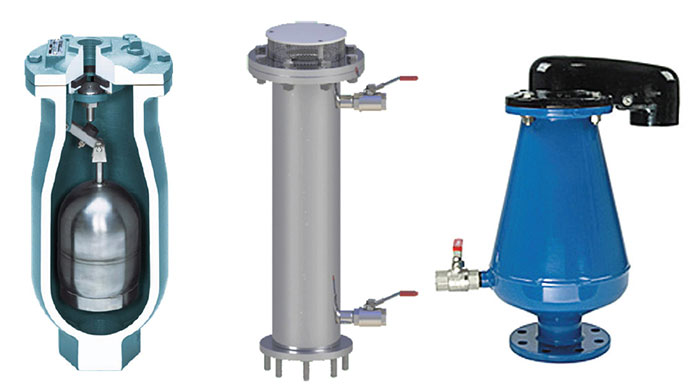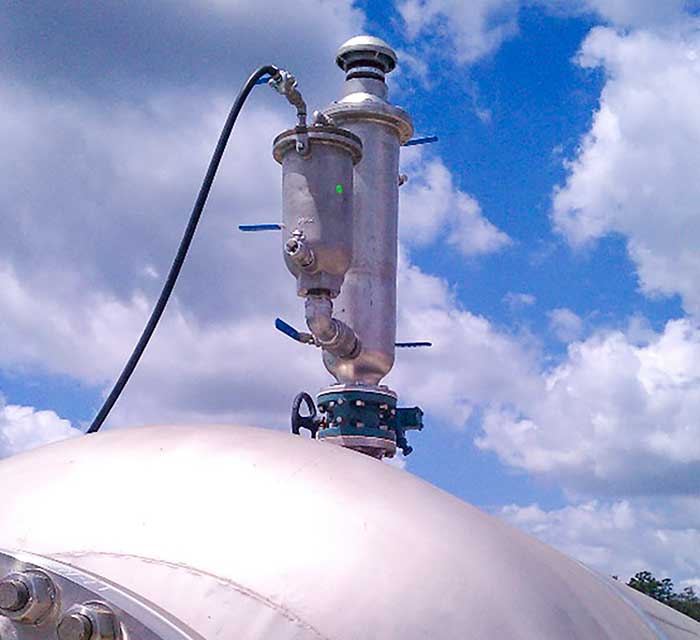Air valves are generally installed on pump discharge headers and at high points along force mains to prevent air pockets or vacuum conditions. Air and vacuum pockets can cause system surges, loss of efficiency and rapid corrosion of the pipe. Air valves are automatic, normally open valves that expel gases when they collect in the piping system. When wastewater enters the valve body, a float lifts through buoyancy and closes the orifice in the outlet of the valve so fluid is not expelled. Wastewater air valves are uniquely designed to handle the debris, greases, solids, and corrosive fluids and gases associated with wastewater. Air valves were first standardized by the American Water Works Association (AWWA) in 1992 with the publishing of AWWA C512, “Air-Release, Air/Vacuum, and Combination Air Valves for Waterworks Service.” AWWA recognized the need to expand product standards to include wastewater in 2006 (AWWA, 2006). In 2007, AWWA developed a definition of wastewater for use by the standards committees. In response, the AWWA Air Valve Committee began in earnest in 2008 to expand C512 to include air valves designed for the newly defined wastewater service. The result was the 2015 edition of C512 and a revision to the accompanying Manual of Practice M51. The new standard included the addition of cast and fabricated stainless steel construction along with two recommended purchaser options. Purchasers were advised to consider a test pressure less than 20 pounds per square inch gauge (psig) for gravity flow, low-pressure flow or static non-flow conditions. Further, purchasers were advised to consider an interior epoxy coating to reduce clogging and prevent corrosion in wastewater service.
 Image 1. Air pockets can cause surges, loss of efficiency and pipe corrosion. (Images courtesy of Val-Matic Valve & Mfg. Corp.)
Image 1. Air pockets can cause surges, loss of efficiency and pipe corrosion. (Images courtesy of Val-Matic Valve & Mfg. Corp.)Air Valve Design
Several design requirements were added for wastewater to prevent clogging. Wastewater valves must have a minimum inlet size of 2 inches, the valve body shall be elongated, and the interior bottom shall be sloped to the outlet to facilitate draining. The body is also equipped with a 1-inch drain and a 1/2-inch flush port on the top to facilitate backwashing. As shown in Image 2, wastewater air valves come in several different styles. They all share the design feature of elongated bodies, corrosion resistant trim and float operation. The elongated shape of the body is essential; when wastewater enters the valve, it compresses the air trapped in the valve as the system operating pressure increases. In accordance with Boyle’s gas law, as the pressure in the valve increases, the volume of the gas in the valve is reduced inversely proportional. Therefore, if a valve used at 80 psig (94.7 pounds per square inch absolute [psia]), the volume of the air in the valve will be compressed by the ratio of pressures, or 14.7/94.7, or 15 percent of its beginning volume. Hence, the bodies are elongated or conical in shape so that the wastewater is held away from the outlet orifice mechanism by the compressed air. Image 2. Examples of combination air valves for wastewater service
Image 2. Examples of combination air valves for wastewater serviceTypes of Air Valves
Whether used for water or wastewater service, here are three basic types of air valves as defined in AWWA Standard C512.- air-release
- air/vacuum
- combination
 Image 3. Dual-body, stainless steel combination air valve
Image 3. Dual-body, stainless steel combination air valveSummary
When air is allowed to accumulate in pressurized forcemains, efficiency is sacrificed, and serious system damage can occur. By having an understanding of the various types of wastewater air valves, system designers can better select and install air valves for the protection of liquid piping systems. References- AWWA Board of Directors Meeting Minutes, February 12, 2006 – Austin, Texas.
- American Water Works Association, AWWA C512-2015, “Air Release, Air/Vacuum, and Combination Air Valves for Water and Wastewater Service.”
- American Water Works Association, AWWA M51, 2nd ed., “Air Valves: Air Release, Air/Vacuum, and Combination,” 2016.
Wastewater
A combination of the liquid and water-carried waste from residences, commercial buildings, industrial plants and institutions, together with any groundwater, surface water and stormwater that may be present.

